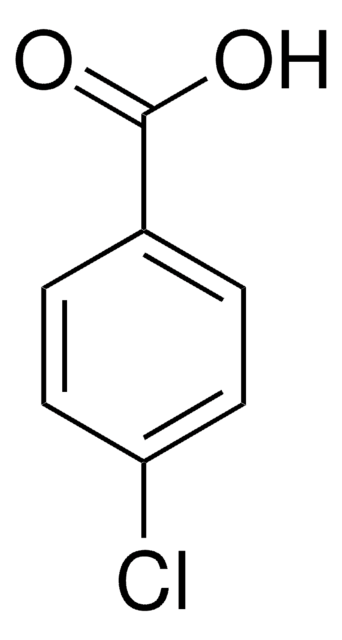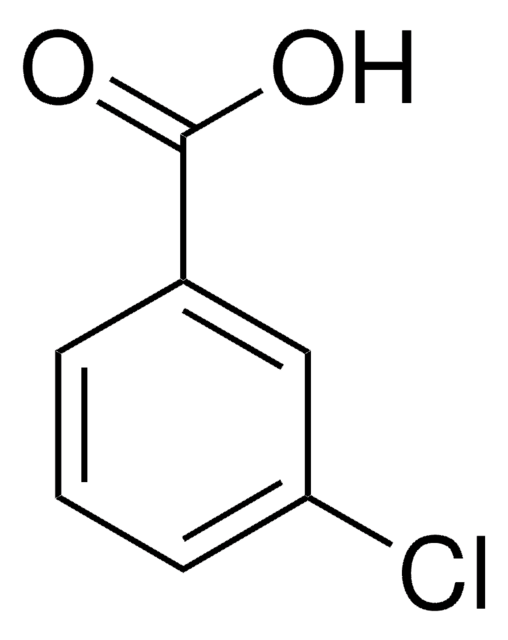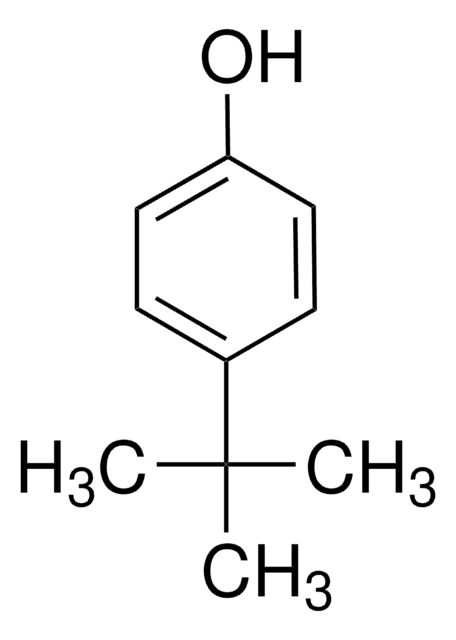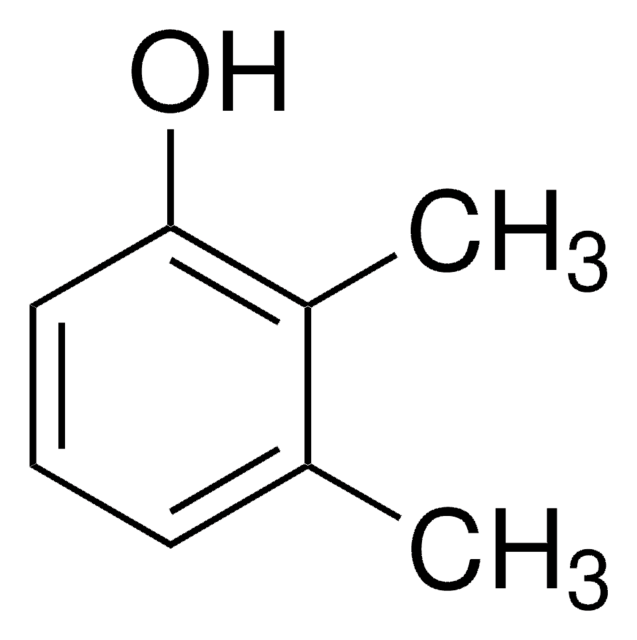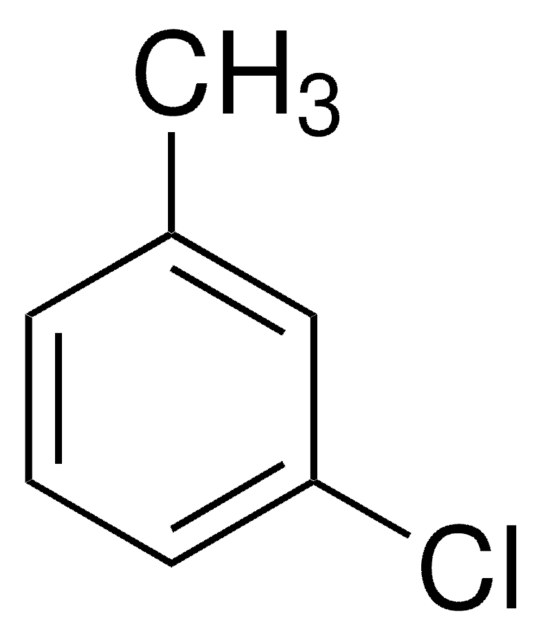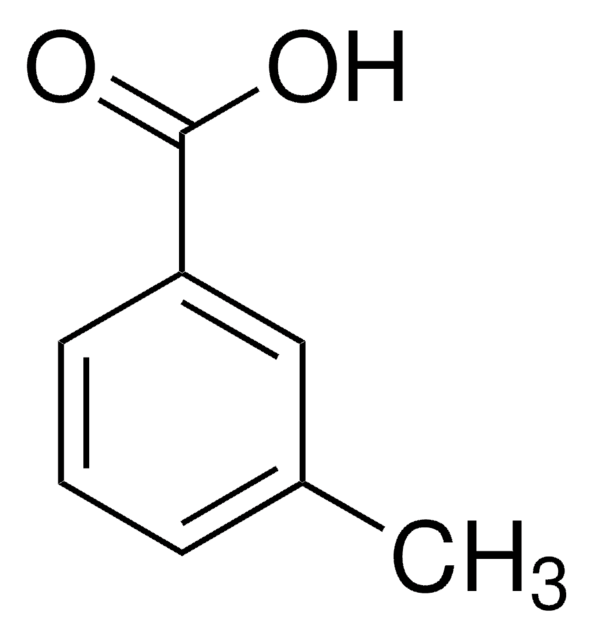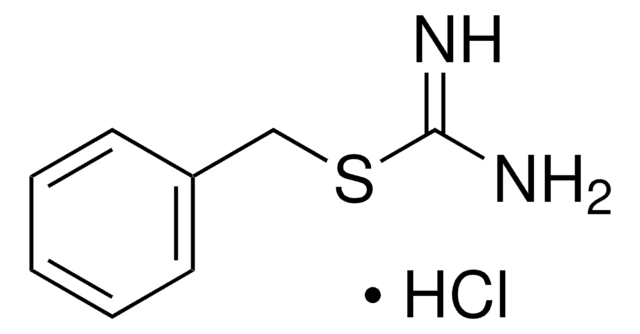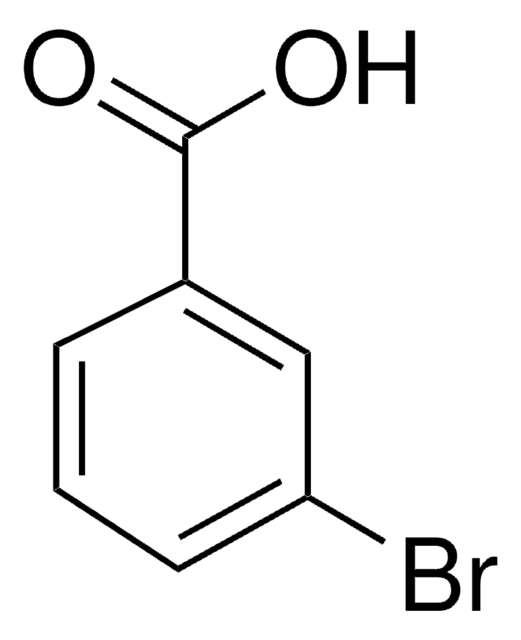C24604
3-Chlorobenzoic acid
ReagentPlus®, ≥99%
Sinonimo/i:
m-Chlorobenzoic acid
Autenticatiper visualizzare i prezzi riservati alla tua organizzazione & contrattuali
About This Item
Formula condensata:
ClC6H4CO2H
Numero CAS:
Peso molecolare:
156.57
Beilstein:
907218
Numero CE:
Numero MDL:
Codice UNSPSC:
12352100
ID PubChem:
NACRES:
NA.22
Prodotti consigliati
Livello qualitativo
Nome Commerciale
ReagentPlus®
Saggio
≥99%
Stato
powder
Punto di fusione
153-157 °C (lit.)
Stringa SMILE
OC(=O)c1cccc(Cl)c1
InChI
1S/C7H5ClO2/c8-6-3-1-2-5(4-6)7(9)10/h1-4H,(H,9,10)
LULAYUGMBFYYEX-UHFFFAOYSA-N
Cerchi prodotti simili? Visita Guida al confronto tra prodotti
Categorie correlate
Note legali
ReagentPlus is a registered trademark of Merck KGaA, Darmstadt, Germany
Avvertenze
Warning
Indicazioni di pericolo
Consigli di prudenza
Classi di pericolo
Eye Irrit. 2 - Skin Irrit. 2
Codice della classe di stoccaggio
11 - Combustible Solids
Classe di pericolosità dell'acqua (WGK)
WGK 3
Dispositivi di protezione individuale
dust mask type N95 (US), Eyeshields, Gloves
Scegli una delle versioni più recenti:
Possiedi già questo prodotto?
I documenti relativi ai prodotti acquistati recentemente sono disponibili nell’Archivio dei documenti.
I clienti hanno visto anche
V P Jayachandran et al.
Journal of industrial microbiology & biotechnology, 36(2), 219-227 (2008-10-23)
The compatibility and efficiency of two ortho-cleavage pathway-following pseudomonads viz. the 3-chlorobenzoate (3-CBA)-degrader, Pseudomonas aeruginosa 3mT (3mT) and the phenol-degrader, P. stutzeri SPC-2 (SPC-2) in a mixed culture for the degradation of these substrates singly and simultaneously in mixtures was
Caroline Laemmli et al.
Archives of microbiology, 181(2), 112-121 (2003-12-17)
Ralstonia eutropha JMP134 possesses two sets of similar genes for degradation of chloroaromatic compounds, tfdCDEFB (in short: tfdI cluster) and tfdDII CII EII FII BII (tfdII cluster). The significance of two sets of tfd genes for the organism has long
Hee-Sung Bae et al.
Chemosphere, 55(1), 93-100 (2004-01-15)
An anaerobic continuous-flow fixed-bed column reactor capable of degrading 3-chlorobenzoate (3-CBA) under denitrifying conditions was established, and its rate reached 2.26 mM d(-1). The denitrifying population completely degraded 3-CBA when supplied at 0.1-0.54 mM, but its activity was partly suppressed
Nicole Trefault et al.
International microbiology : the official journal of the Spanish Society for Microbiology, 12(2), 97-106 (2009-09-29)
Cupriavidus necator JMP134 has been extensively studied because of its ability to degrade chloroaromatic compounds, including the herbicides 2,4-dichlorophenoxyacetic acid (2,4-D) and 3-chlorobenzoic acid (3-CB), which is achieved through the pJP4-encoded chlorocatechol degradation gene clusters: tfdCIDIEIFI and tfdDIICIIEIIFII. The present
Alfredo Gallego et al.
World journal of microbiology & biotechnology, 28(3), 1245-1252 (2012-07-19)
An indigenous strain of Pseudomonas putida capable of degrading 3-chlorobenzoic acid as the sole carbon source was isolated from the Riachuelo, a polluted river in Buenos Aires. Aerobic biodegradation assays were performed using a 2-l microfermentor. Biodegradation was evaluated by
Il team dei nostri ricercatori vanta grande esperienza in tutte le aree della ricerca quali Life Science, scienza dei materiali, sintesi chimica, cromatografia, discipline analitiche, ecc..
Contatta l'Assistenza Tecnica.
